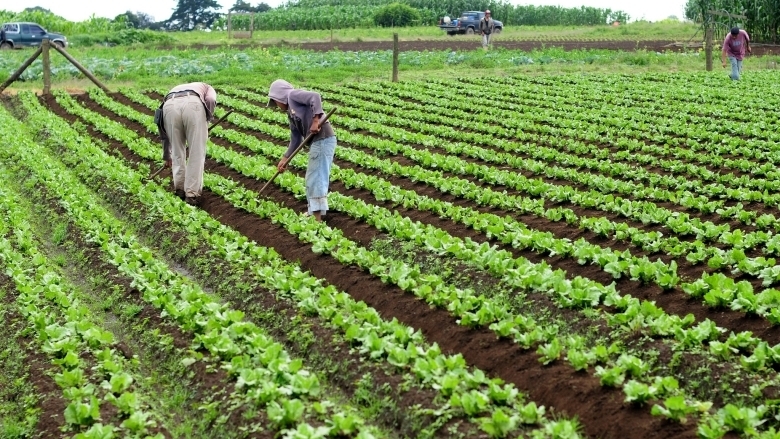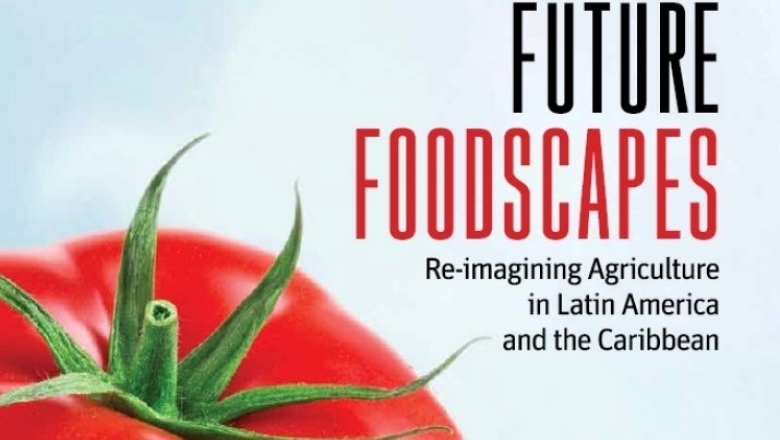Being a farmer in Latin America is not an easy task, especially in times of COVID-19. Although the region responded well to the challenges of the current pandemic, what will the future of agri-food systems look like? Simply being considered the world’s breadbasket isn’t enough to satisfy greater demand from a constantly growing population, maintain price stability and, above all, do it in a balanced way that protects the region’s rich biodiversity.
Michael Morris, an expert in agriculture at the World Bank, authored a report on the region’s agri-food systems together with his colleagues Ashwini Rekha Sebastian and Viviana Maria Eugenia Perego, with collaboration from other institutions such as the International Food Policy Research Institute (IFPRI), the Inter-American Institute for Cooperation in Agriculture (IICA), the Inter-American Development Bank (IDB), and McKinsey. In this interview, Morris explains how the future of agriculture can be reimagined in Latin America and the Caribbean.
Question: What is the current landscape of the agriculture sector in Latin America? What are the main challenges?
Morris: Agriculture and food systems in the Latin America and the Caribbean Region (LAC) are rightfully recognized as among the most successful on the planet. They have fed a fast-growing population, facilitated economic development, enabled urbanization, generated significant export revenues, and contributed to reducing hunger and poverty, including for the estimated 20 million households classified as small-scale producers or family farmers. Moreover, they have proved remarkably resilient in the face of the COVID-19 pandemic, and played a beneficial countercyclical role by ensuring largely adequate food supplies and stable food prices in global markets.
LAC is the world’s largest net food exporting region, and food exports from LAC help to lower and stabilize international food prices, bringing benefits to consumers everywhere. In addition, LAC is the world’s largest producer of ecosystem services, and its vast forests and extensive savannahs play a critical role in shaping global weather patterns and mitigating climate change.
Despite these contributions, the public image of LAC agriculture and food systems as dynamic, productive, and efficient reflects only part of a more complicated reality. In many ways, LAC agriculture and food systems are underperforming. They have been slow to respond to changes in the global environment, and many continue to rely on centuries-old production methods that are outdated, inefficient, and harmful to people and to the environment.
Fortunately, the outlook is not all negative. Against the current backdrop of underperformance, enormous opportunities are waiting to be seized. Technological advances are ushering in new, more efficient, and more environmentally friendly ways to produce, process, distribute, consume and recycle food, magnifying the potential payoffs to adoption of improved technologies and practices.
Q: Over the last decades we saw the agriculture frontier expand in the region. How can we balance growth in agriculture production without damaging the environment?
Morris: Even though some farmers and ranchers have been at the forefront of adopting green technology, agriculture and food systems in many LAC countries are dominated by production models based on unsustainable practices that undermine ecosystem services critical for human well-being, while also generating significant greenhouse gas emissions that are an important contributor to climate change. LAC agricultural emissions make up almost one-half of the region’s emissions, and agriculture and ranching are responsible for 70% of regional habitat conversion, while the deforestation rate in LAC is three times the global average. The current production models threaten the viability of LAC food production capacity and will need to be replaced with better models that enhance productivity, reduce food loss and waste, and ensure the sustainability of the natural resource base on which agriculture depends, increasing the provision of ecosystem services and enhancing climate resilience.
As with most complex problems, there is no magic bullet, but rather a combination of actions that would be necessary, ranging from intensive agricultural and livestock practices to payment for ecosystem services, climate-smart digitization and technology adoption. One approach that offers great potential to integrate many of these angles is the circular economy, to take advantage of better land management, energy and water consumption, waste management and pollution prevention. Technological innovations such as precision agriculture, water reuse, bioenergy and biofertilizer or smart agriculture offer numerous opportunities to complement this approach. This enables intensive and efficient use of resources, high productivity with a low environmental footprint and increased climate resilience. And in a region where four out of five people live in areas classified as urban, integrating the circular economy into urban and peri-urban agriculture (the practice of growing food and raising livestock in or near urban areas) seems a promising option.
Q: In this context of pandemic, what is the role of the agriculture sector in supporting a sustainable economic recovery of Latin America?
Morris: While the full scale of the pandemic’s effects is still unfolding, the impacts on LAC agriculture and food systems are being felt in multiple dimensions. Fortunately, primary production has proved remarkably resilient, in the sense that most farmers and livestock keepers have been able to continue producing. In contrast, challenges have often appeared downstream in the supply chain, as the flow of many food products has been disrupted by mobility restrictions that have caused bottlenecks in distribution or impeded redirecting flows of food as some sectors of the economy have closed down.
But there´s no doubt that agriculture and food sector can play a vital role in supporting a sustainable economic recovery in LAC by safeguarding the region’s food supply, providing employment for millions, generating foreign exchange earning in net food exporting countries, improving the balance of trade in net food importing countries, and restoring the ecosystem services on which the long-term welfare of the planet depends.
Importantly, the recovery provides an opportunity to build back better and to promote integrated actions at the nexus of human, animal and environmental health, the three inter-linked axes of One Health. Systems, policies, institutions in the post-COVID-19 transition will need to be reframed to ensure cleaner, greener, and more inclusive foodscapes and quality, safe and more nutritious food. Jobs and economic transformation should be at the center of this forward-looking strategy, building on resilient infrastructure and strengthened human capital.
Q: What could affect future LAC agriculture and food systems?
Morris: The report identifies a series of drivers that could affect future LAC agriculture and food systems. These drivers fall into two categories—trends and disruptors. Trends are long-term forces like population growth, income growth and urbanization. Trends will have a powerful effect on agriculture and food systems, but they are slow-moving and to a large extent predictable, so governments should be better equipped to address them.
In contrast, disruptors are sudden forces like technological breakthroughs, catastrophic weather events, global disease pandemics or radical shifts in government policies. Disruptors also can have large impacts on food systems, but because they can occur rapidly and without warning, it is more difficult to prepare for them.
Since the future is unknowable in the end, the report does not present a single forecast of how the trends and disruptors will affect the region’s agri-food systems. Instead, it presents the results of a scenarios-building exercise which involved a blend of quantitative and qualitative methods and promoted the engagement of a broad set of stakeholders through a combination of in-person and virtual platforms. The exercise explored how different combinations of drivers could lead to diverse outcomes for the future of agriculture and food systems in LAC. Based on the scenarios, priority actions were identified that can be helpful in moving toward favorable outcomes and guarding against unfavorable outcomes. To read more about these measures, please review the report Future Foodscapes: Reimagining Agriculture in Latin America and the Caribbean


